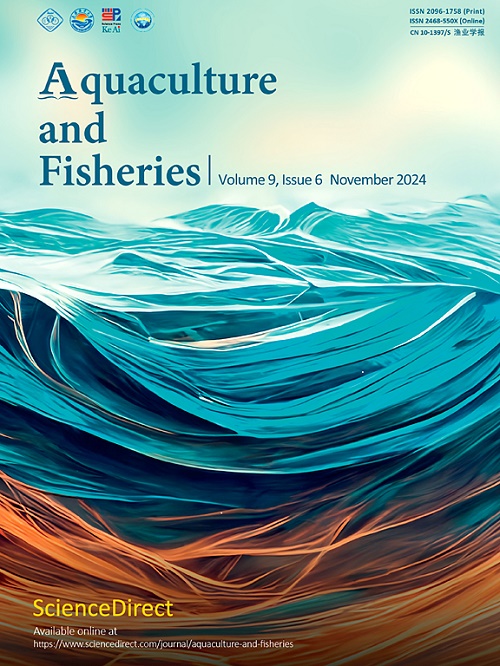Protein requirements in Nile tilapia (Oreochromis niloticus) during production and reproduction phases
Q1 Agricultural and Biological Sciences
引用次数: 0
Abstract
The accelerated growth of global aquaculture has boosted the production chain of Nile tilapia (Oreochromis niloticus), currently the third most cultivated species worldwide. This fish plays a crucial role in global food security. Protein is the main fish diet nutrient, and its quality, as well as protein level variations, directly and significantly affect the productive chain of this species. In this study, we conducted a comprehensive review of protein requirements at different tilapia development stages, underscoring the fundamental importance of a balanced diet to promote efficient growth. The study identified protein requirement variations based on weight, age, and different tilapia farming systems. In addition, the challenges associated with formulating balanced diets are discussed, especially in the face of the scarcity of traditional protein sources, such as fishmeal. Several factors are considered in this review, including tilapia development stage, rearing system, stocking density, ingredient quality, specific tilapia nutritional requirements and strains, feed management, temperature, and water quality. A gradual decrease in protein requirements is observed as fish grow and reach a minimum point during the growth phase, followed by a slight increase during the subsequent fattening phase. Tilapia protein requirements are influenced by various factors, including growth phase and farming system characteristics. Identifying the ideal protein levels at each stage is crucial for guiding sustainable tilapia aquaculture practices and enhancing the overall production efficiency of the species.
尼罗罗非鱼(Oreochromis niloticus)在生产和繁殖阶段的蛋白质需求量
全球水产养殖的加速增长促进了尼罗罗非鱼(Oreochromis niloticus)的生产链,尼罗罗非鱼目前是世界上第三大养殖物种。这种鱼在全球粮食安全中起着至关重要的作用。蛋白质是鱼类主要的饲料营养物质,其质量和蛋白质水平的变化直接而显著地影响着鱼类的生产链。在本研究中,我们对罗非鱼不同发育阶段的蛋白质需求进行了全面回顾,强调了平衡饮食对促进高效生长的根本重要性。该研究确定了蛋白质需求的变化取决于体重、年龄和不同的罗非鱼养殖系统。此外,还讨论了与制定均衡饮食相关的挑战,特别是在传统蛋白质来源(如鱼粉)稀缺的情况下。本综述考虑了几个因素,包括罗非鱼的发育阶段、饲养制度、放养密度、原料质量、罗非鱼的特定营养需求和品系、饲料管理、温度和水质。随着鱼的生长,蛋白质需要量逐渐下降,在生长阶段达到最低点,随后在随后的育肥阶段略有增加。罗非鱼对蛋白质的需求受多种因素的影响,包括生长期和养殖系统特点。确定每个阶段的理想蛋白质水平对于指导可持续罗非鱼养殖实践和提高该物种的整体生产效率至关重要。
本文章由计算机程序翻译,如有差异,请以英文原文为准。
求助全文
约1分钟内获得全文
求助全文
来源期刊

Aquaculture and Fisheries
Agricultural and Biological Sciences-Aquatic Science
CiteScore
7.50
自引率
0.00%
发文量
54
审稿时长
48 days
期刊介绍:
 求助内容:
求助内容: 应助结果提醒方式:
应助结果提醒方式:


